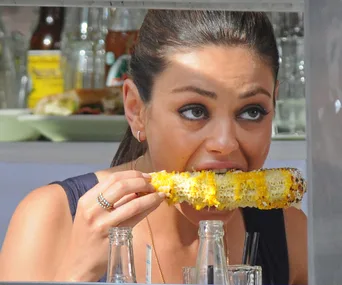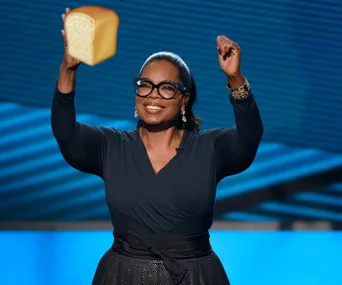Perplexed about why some people can tuck into as much pasta as they want and never seem to gain weight, but you feel like the scales creep up every time you look at a bread roll? It turns out you’re not imagining it. According to Dr Sharon Moalem, a leading US geneticist, different people process carbohydrates differently – so while some people thrive on them, others should restrict how many they eat.
The surprising news is, you don’t even need an expensive genetic test to work out which carbohydrate ‘group’ you fall into.
Take the cracker self-test
What you’ll need: An unsalted, unflavoured cracker, like a water cracker, and a timer (the stopwatch function on your phone will work nicely). If you eat a gluten-free diet, swap the cracker for a small piece of raw peeled potato.
What you should do: Take a bite of the cracker and begin timing and chewing – resist the urge to swallow! You need to pay attention as you’re chewing, to when the cracker changes taste. As soon as you notice it has, take note of the time on your stopwatch. If you don’t detect a change in taste and you hit the 30-second mark, you can stop. Repeat the test twice more, add up the times and divide the total by three to get an average.

What the results mean:
If you noticed that the cracker changed taste in:
0-14 seconds – your carb type is full
You thrive on carbs, and up to 50 per cent of your kilojoules can come fromcarbohydrates, which means you can eat around 250g of carbs a day. The remaining 50 per cent of kilojoules should be divided between fats (30 per cent) and protein (20 per cent).
15-30 seconds – your carb type is moderate
Up to 35 per cent of your kilojoules can come from carbohydrates, so you can eat 175g of carbs a day. Another 35 per cent of your kilojoules should come from fats, and 30 per cent from protein.
Your body finds carbohydrates quite difficult to process, so they should account for no more than 25 per cent of your kilojoules – which means restricting your intake to around 125g. The rest of your kilojoules should come from fats (40 per cent) and protein (35 per cent).
5 facts you need to know
Working out your ‘carb type’ is just the start
In his book, The DNA Restart, Dr Moalem outlines a number of other strategies that contribute to sustainable weight loss and good health, by ‘syncing’ your dietary and lifestyle habits with your genes.
These include some usual suspects, like exercising regularly, limiting alcohol intake and quitting processed meats, as well as some more unique strategies, all of which fall under five key pillars – Eat for Your Genes, Reverse Ageing, Eat Umami, Drink Oolong Tea and Slow Living.
“While the first pillar helps you recalibrate your carbohydrate, fat and protein consumption to your genetic make-up to help you lose weight, the other pillars ensure you can enjoy that ideal weight over a long and healthy life,” says Dr Moalem.
It’s not just about losing weight
“Everyone, regardless of whether they’re trying to lose weight or not, can improve their genetic health by aligning what they eat and how they live with their genetic make-up,” says Dr Moalem. “It pays to remember that while there’s been an association between weight and health for a long time, we now know that it’s not always the case – you can actually be skinny and unhealthy, leading a lifestyle that harms your DNA, which shortens your life span.” That’s why the focus of The DNA Restart is the genes we inherit from our ancestors. “By learning to not only eat for those genes, but to take better care of them as well, through reducing inflammation and activating inherent DNA repair mechanisms, we can reset our course to health and longevity,” he says.

Start eating ‘umami’
“Called the fifth taste, foods rich in umami qualities make you feel satisfied faster,” says Dr Moalem. Potent sources of umami include miso, tamari, dried mushrooms, yoghurt, tomatoes, prawns, Worcestershire and fish sauces, fatty fish like mackerel, salmon and sardines, and hard cheeses like parmesan.
“By incorporating some simple umami-enhancing techniques, like using whole tomatoes in your recipes because the seeds in the tomato are the richest source of umami, you can capitalise on umami’s ability to make you feel fuller, for longer,” he says.
Drink oolong tea
Dr Moalem recommends drinking between two and four cups a day. “Oolong tea binds dietary fat and prevents your body from absorbing it, so it’s a natural and effortless way to arrive at your optimal weight.”
Rich in antioxidants called polyphenols, oolong tea can also reduce inflammation, protect your DNA from oxidative stress and encourage the growth of healthy gut bacteria. To get the most benefit, choose a good-quality oolong tea (look for teabags where you can see the whole leaves unfurl once the bag is submerged in water), boil the jug and then wait for a couple of minutes for the water to cool a little. Pour about 180ml of water over a teabag and let it steep for one to two minutes. Remove the bag and drink the tea black and unsweetened.

It pays to slow down
Dr Moalem is a big advocate of ‘slow living’, which includes everything from slowing down your eating speed to developing a healthy, sleep routine. “A great way to start practising slow living is making the effort to do the ‘First Bite/Last Bite’ exercise at least once a day, with a meal.” Here’s how it works:
Once you’ve had your first mouthful of food, wait 30 seconds before taking another bite.
You can then eat ‘normally’ but try to make the meal last for at least 30 minutes.
When you’re coming to the end of your meal and there’s only one mouthful of food left on your plate, stop and wait 30 seconds before you eat it.


